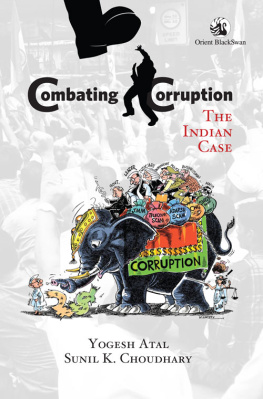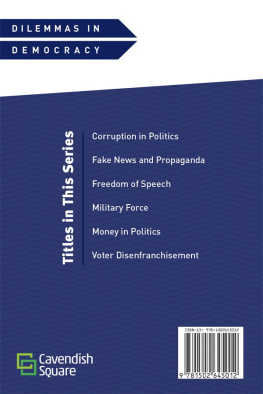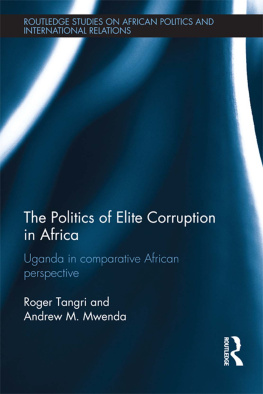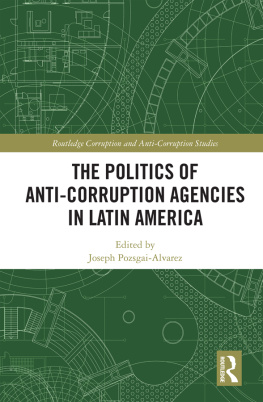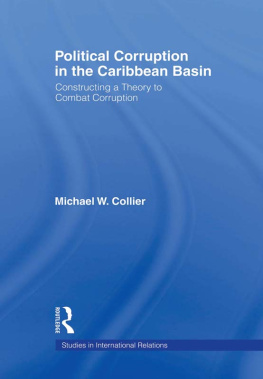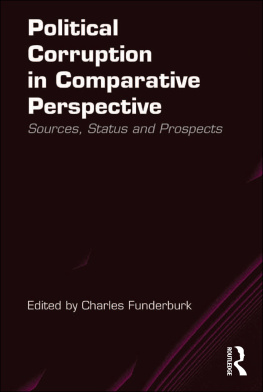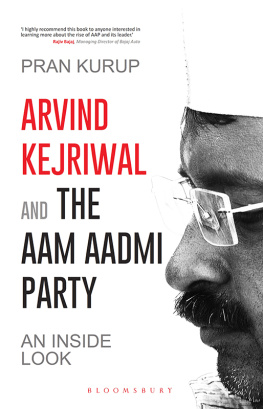Combating Corruption
For our entire range of books please use search strings "Orient BlackSwan", "Universities Press India" and "Permanent Black" in store.
Combating Corruption
The Indian Case
Yogesh Atal
Sunil K. Choudhary
Orient Blackswan Private Limited
Registered Office
3-6-752 Himayatnagar, Hyderabad 500 029 (A.P.), INDIA
e-mail:
Other Offices
Bangalore, Bhopal, Bhubaneshwar, Chennai,
Ernakulam, Guwahati, Hyderabad, Jaipur, Kolkata,
Lucknow, Mumbai, New Delhi, Noida, Patna
Orient Blackswan Pvt. Ltd. 2014
First published by Orient Blackswan Pvt. Ltd. 2014
eISBN 978 81 250 5603 4
e-edition:First Published 2014
ePUB Conversion: .
All rights reserved. No part of this publication may be reproduced, distributed, or transmitted in any form or by any means, including photocopying, recording, or other electronic or mechanical methods, without the prior written permission of the publisher, except in the case of brief quotations embodied in critical reviews and certain other noncommercial uses permitted by copyright law. For permission requests write to the publisher.
Contents
Part One
Part Two
Part Three
Figures and Tables
figures
tables
Prologue
At the beginning of the second decade of the twenty-first century, India witnessed unprecedented mass protests against the growing problem of corruption. This was a key event witnessed more than three decades after Jayaprakash Narayan's call for a total revolution' in the 1970s that gave rise to the phenomenon of coalition governments and the emergence of several regional parties and parochial leaders, and ended the one-party system of Congress hegemony. But in course of time, as is the fate of any revolutionary movement, the euphoria calmed down and a new phase of coalition politics got routinised. It took more than three decades of routine functioning to give way to yet another outburst of pent up emotions and feelings of criticism against the prevailing system. It was corruption which triggered the agitation this time.
While successive governments since Independence had repeatedly expressed their concern about the growing menace of corruption and reconfirmed their resolve to root it out, corruption in India seemed to have reached alarming proportions by the beginning of the twenty-first century. Cases of corruption involving not only high officials, but also key politicians were exposed, thanks to daring investigative journalism. The fact that such scandals involved billions of rupeeseither as black money stashed away in foreign banks, or as amounts obtained by defrauding the exchequerserved as eye-openers for the common man who often leads a life of hardships. Despite knowing fully well that such transactions did not directly affect them, the common people still located in them the root cause of their poverty, and spontaneously supported the movements against the system that had allowed the perpetuation of corruption. Through these movements, they found a channel to direct their personal grievances vis--vis government offices.
If it was Mahatma Gandhi who led the freedom struggle, and Jayaprakash Narayan who called for a total revolution after twenty-five years of Indian Independence, this time it was Anna Hazare from the little-known village of Ralegan Siddhi in Maharashtra who raised his voice against corruption in high places. Quite independently, yoga guru Baba Ramdev, hailing from a small village in Haryana, who had gained great popularity throughout the country and even beyond, also began raising his voice against the rampant corruption and mis-governance in the country. Both Anna and Ramdev became the new crowd-pullers, and the agitations launched by them were dubbed as a second freedom struggle'. Each, in his own way, raised the issue of corruption and other related matters that caught the imagination of the man-in-the-street. They became the new magnets that attracted huge crowds who participated in protests against tainted politicians, demanding systemic reforms.
In the case of Anna Hazare, the demand for a jan lokpal (Indian ombudsman) became the driving force for a movement that assumed the sloganish appellation: India Against Corruption (IAC). An NGO with this name, started by Magsaysay Award winner, Arvind Kejriwal, made Anna its icon. The group that led the agitation came to be popularly known as Team Anna'. Other than Anna Hazare and Arvind Kejriwal, the key players in Team Anna were former IPS officer, Kiran Bedi; Manish Sisodia; poet and lecturer, Kumar Vishwas, and the father-son duo of Supreme Court lawyers, Shanti Bhushan and Prashant Bhushan. Anna became almost a household name, and Kejriwal was his trusted lieutenant and spokesperson.
Ramdev used his yoga camps first to popularise a return to the indigenous system of medicine and cure. He then began to take up social causes one by one, and finally focused on the issue of huge amounts of black money stashed away in foreign banks. His team of supporters includedbesides his aide, Balakrishnathe well-known journalist and writer, Dr Ved Pratap Vaidik, and the late Rajeev Dikshit, who led a tirade against MNCs and other agencies engaged in black-money transactions.
Corruption, thus, became a key issue and the leaders of the agitation, drawn from different backgrounds, gained nationwide popularity. These were the non-political social workers, dedicated to the cause of the common man, and deeply concerned with the growing menace of corruption that was on the one hand depleting public money through fraudulent means, and on the other, exploiting the common man who could not get anything done without paying a bribe to the government officials. Mis-governance, growing inefficiency, and constant suffering experienced by the common man were shattering the dreams shown by the leadership in the name of people's rule. And the people began to cultivate, what may be called, a willing suspension of grief (WSG). It is against this state of affairs that Anna directed all his attention, and initiated a nationwide agitation with the support of people like Arvind Kejriwal, Kiran Bedi, Shanti and Prashant Bhushan, and Justice Santosh Hegde.
It must, however, be said that while there is so much talk about corruption, social scientistsparticularly sociologistshave paid relatively little attention to it. Of course, there are critical commentaries and economic calculations of losses and gains, but study of corruption still remains a largely unresearched territory, and is in need of a proper theoretical perspective.
In this book, we are concerned with understanding two featuresnamely, growing corruption and the public protest against it. In order to understand the phenomenon of corruption, we have attempted a tentative formulation to lay the foundations for a proper sociology of corruption, and then portrayed the changing profile of corruption in India, both at the local and top levels. The fact that neither is corruption a new feature, nor is it unique to India alone, necessitates an explanation for the mass protests that were witnessed in the country so many years after Independence. It is apparent that it is corruption in high placesinvolving embezzlement of huge amounts of public moneythat has evoked the anger of the common man. And it barely needed the exposure of such scams to ignite this latent anger. The mass protests provided the common man the opportunity to give vent to his grievance about daily suffering at the hands of the lower rungs of the administration.
Next page
